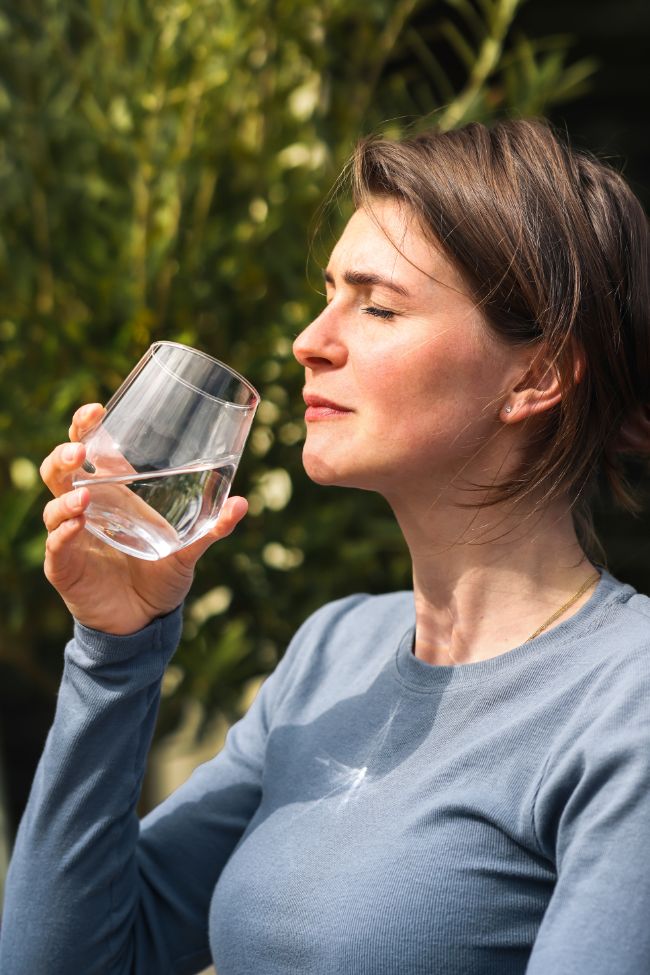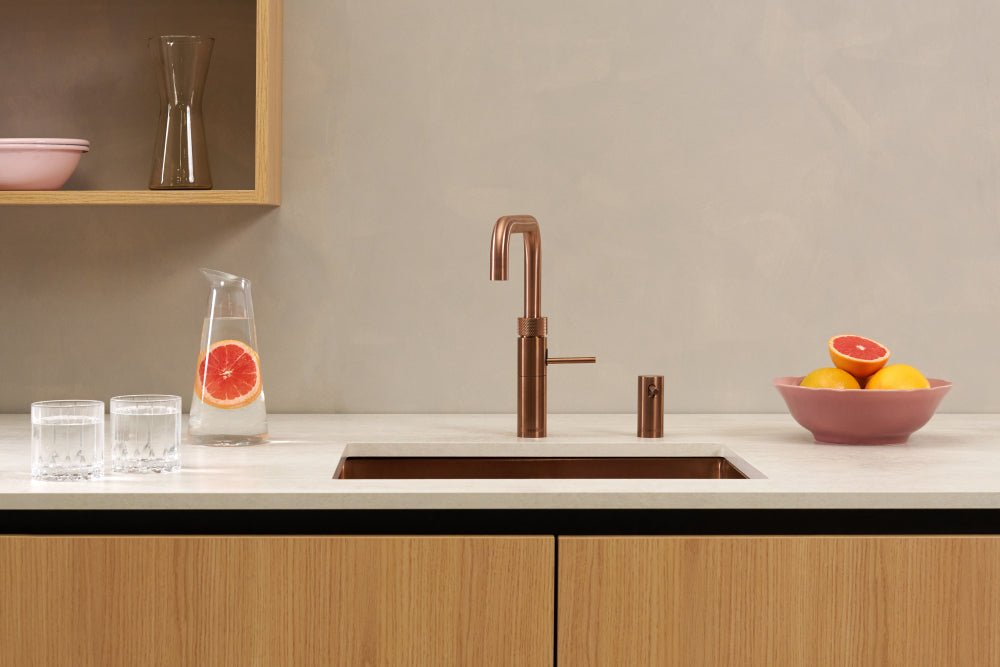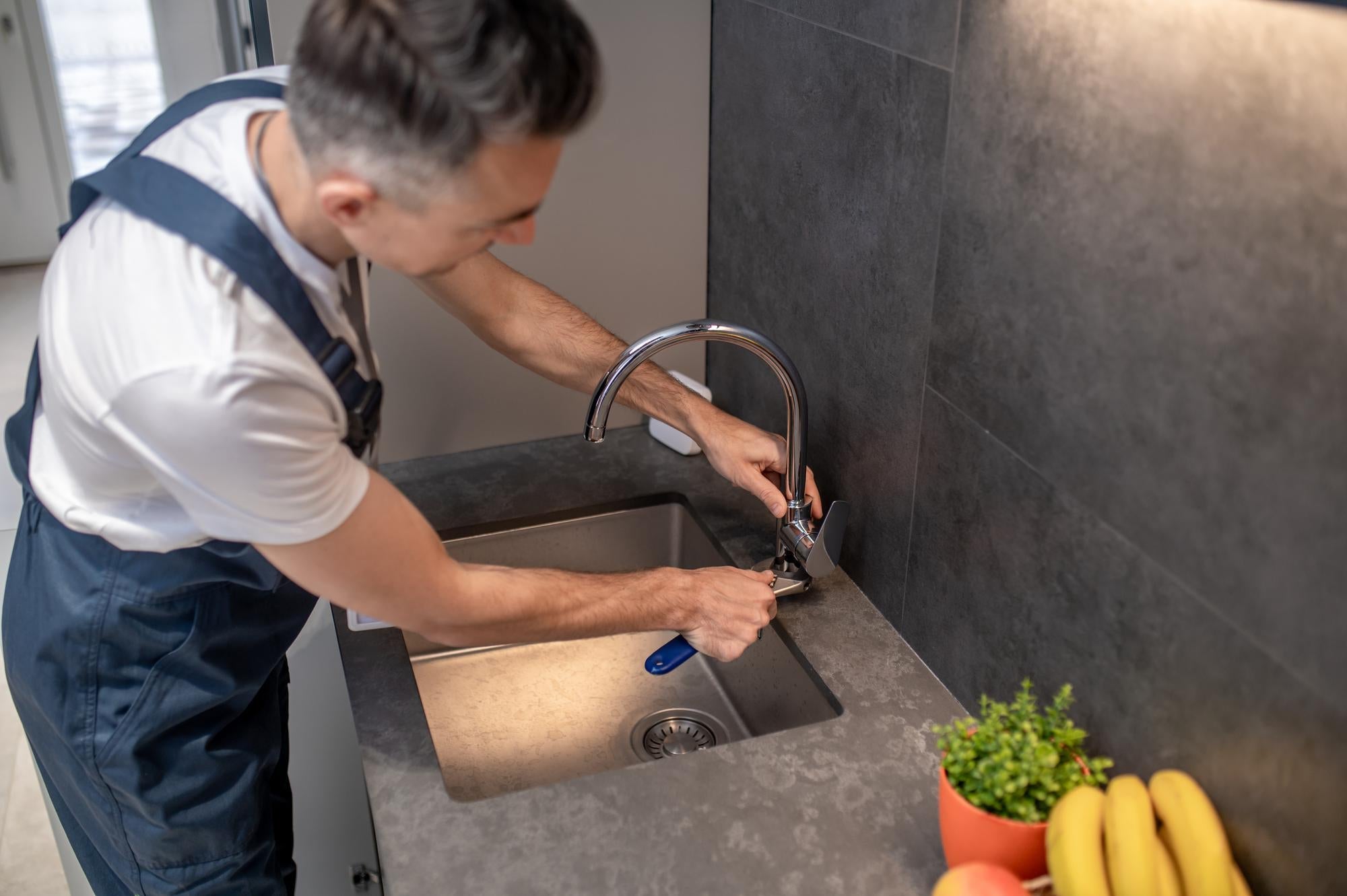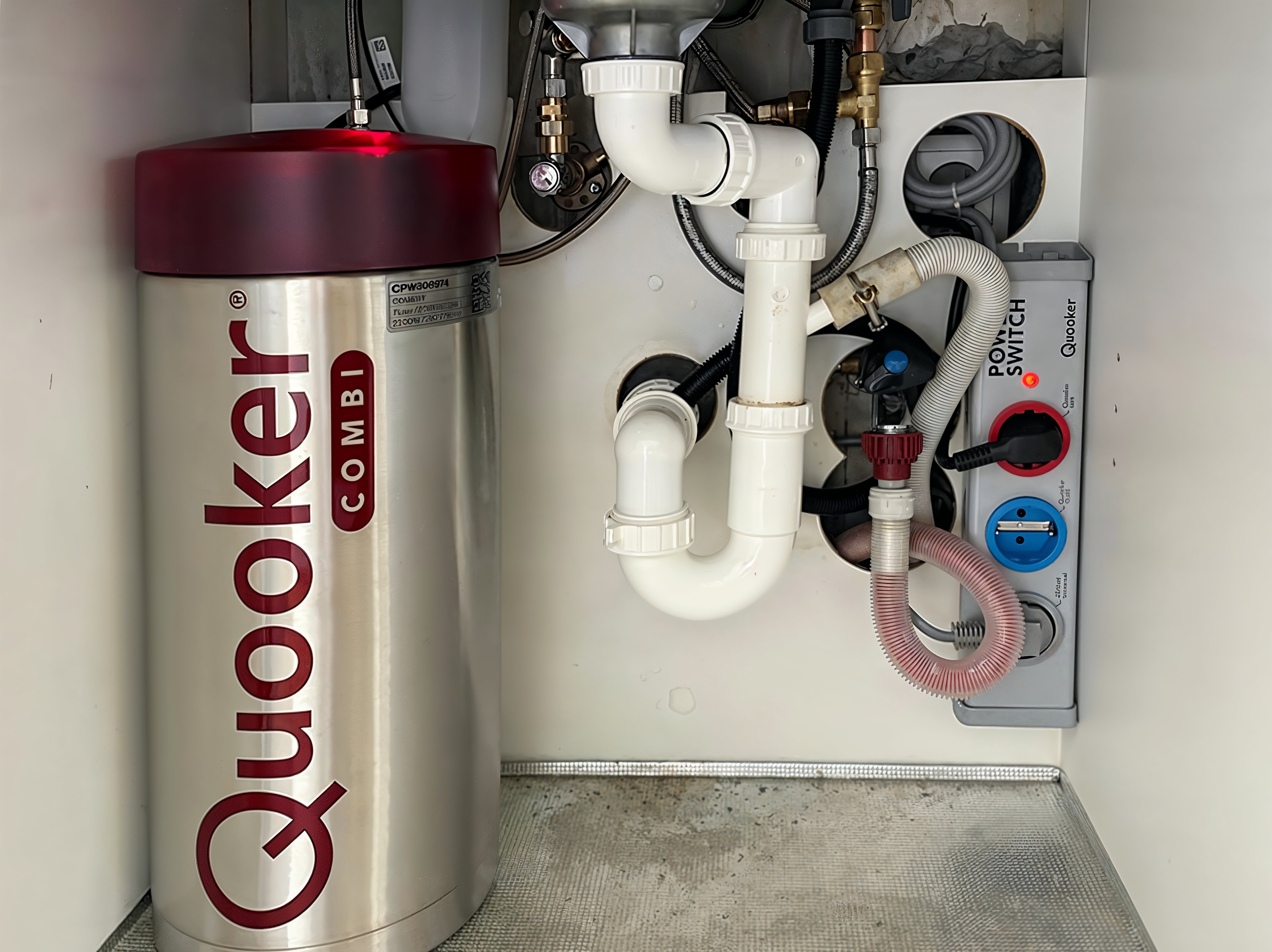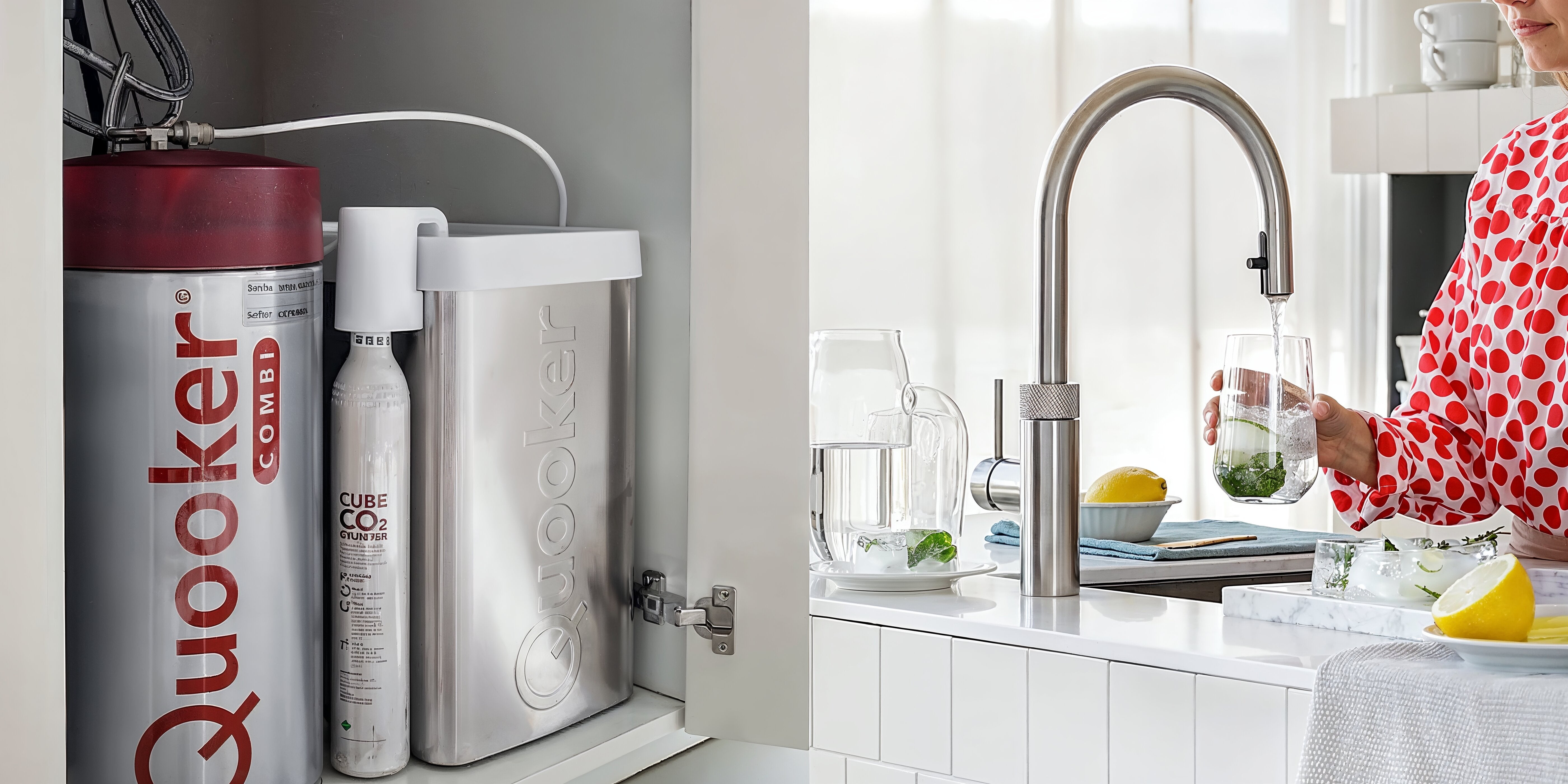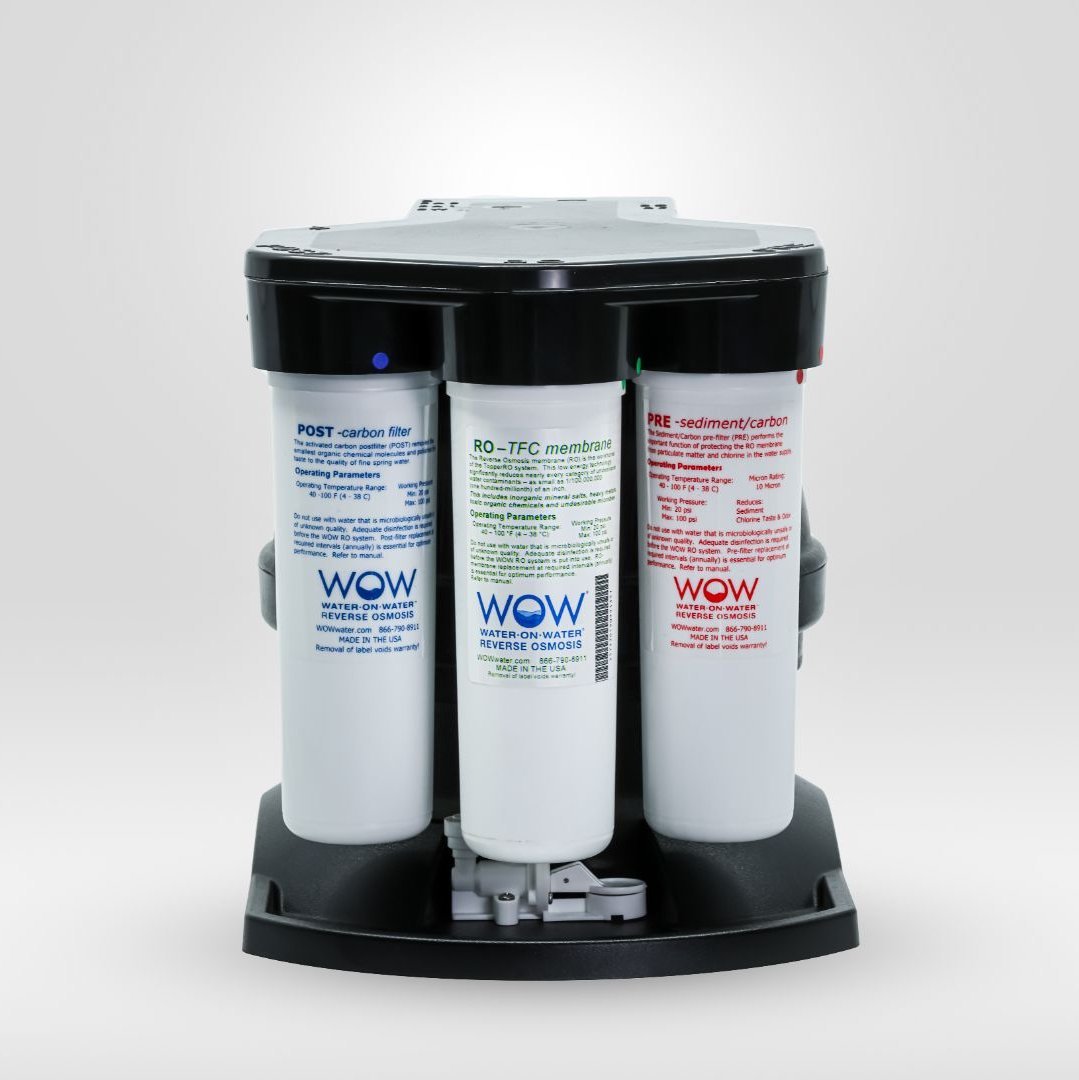RO, NF, and UF systems offer different ways to purify water, each with its own technology and application areas. These filtration systems remove impurities at different levels: reverse osmosis (RO) filters virtually all contaminants, including salts; nanofiltration (NF) retains certain minerals while retaining contaminants; and ultrafiltration (UF) removes larger particles but allows minerals to pass through. The choice depends on your specific water quality requirements, intended use, and budget.
How does an RO (reverse osmosis) water purifier work?
An RO water purifier works on an advanced filtration principle where water is forced under pressure through a semipermeable membrane. This membrane has microscopic pores that allow only water molecules to pass through, while larger molecules such as contaminants, bacteria, viruses, and even dissolved salts are retained.
The filtration process of RO systems usually consists of several steps. In our The Source system, for example, the water starts with a pre-filter (sediment filter) that removes larger particles and organic contaminants. Then, the water passes through the RO membrane where the actual purification takes place. The purified water is stored in a tank, after which it often passes through a post-treatment filter to optimize the taste.
RO technology is extremely effective and removes up to 99% of unwanted substances from tap water, including:
- Dissolved salts and minerals
- Heavy metals (lead, mercury, arsenic)
- Pesticides and chemicals
- Bacteria and viruses
- Drug residues
This high level of purification makes RO systems ideal for those who want the purest drinking water. Moreover, modern systems like our water purifier are certified to IAMPO NSF/ANSI 58 standards, guaranteeing safety and reliability.
What are the advantages and disadvantages of NF (nanofiltration) systems?
Nanofiltration offers a balanced water purification method that falls between RO and UF in terms of filtration level. The main advantage of nanofiltration systems is their selective filtration capacity —they effectively remove contaminants while retaining certain valuable minerals in the water.
The benefits of nanofiltration are numerous:
- Retains essential minerals such as calcium and magnesium that contribute to taste
- Effectively removes heavy metals, pesticides and other harmful substances
- Reduces water softening by blocking divalent ions
- Produces less wastewater than RO systems
- Requires less water pressure, resulting in lower energy consumption
However, there are also some disadvantages associated with NF systems:
| Disadvantage | Explanation |
|---|---|
| Less complete purification | Does not filter all dissolved salts and smaller molecules |
| Maintenance requirements | Diaphragms can become clogged and require regular replacement |
| Cost price | Purchase costs may be higher than for simpler filter systems |
NF systems are particularly suitable for households seeking a balance between purification and the retention of certain minerals. They offer a compromise between the intensive purification of RO and the more basic filtration of UF.
Which water purification system best suits my situation?
Choosing the ideal water purification system depends on several factors, such as your water quality, intended use, and personal preferences. Below is a comparison of the three systems for different applications:
For drinking water:
- RO: Ideal if you want the purest water or if your tap water contains many contaminants.
- NF: Suitable if you want good purification while retaining certain minerals.
- UF: Sufficient if your tap water is already relatively clean and you mainly want to filter bacteria
For household use:
- RO: Perfect choice for families who want fully purified water for drinking, cooking and tea/coffee
- NF: Good option for families seeking a balance between purity and mineral content
- UF: Suitable for general domestic use where complete desalination is not required
When making your choice, these factors are important to consider:
- Water Quality: Have your tap water tested with a TDS meter to determine the level of dissolved solids
- Budget: RO systems like our The Source are an investment that ranges from €699 to €1297 depending on the package chosen
- Maintenance: Consider how much time and money you want to spend on filter replacement and maintenance
- Installation space: RO systems require a storage tank, while UF systems are more compact
For most households seeking optimally purified drinking water, a water filter system with RO technology offers the best results. These systems remove virtually all contaminants and provide water with a pure, fresh taste that's perfect for drinking and cooking.
At PureAqua, we are happy to help you make the right choice for your specific situation, so you can enjoy pure, healthy water from your own tap.
